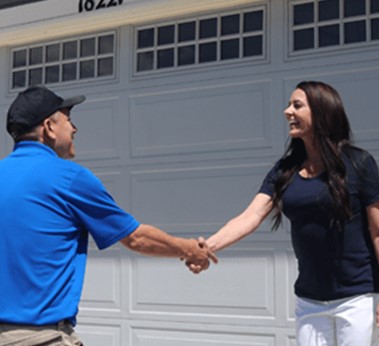
When it comes to maintaining the structural integrity of your home, few things are as crucial as ensuring that the foundation remains solid. A healthy foundation is essential to the overall safety and longevity of a home, says Redsail Property Management experts. Unfortunately, many homeowners overlook the importance of proper drainage when it comes to safeguarding their foundation. Poor drainage can lead to a host of issues, ranging from cracks in the foundation to basement flooding, and even structural damage that can be costly to repair.
The following article explores the critical role that proper drainage plays in maintaining a healthy foundation and why gutter cleaning and maintenance should be a top priority for homeowners looking to prevent foundation problems. By understanding the relationship between gutters and drainage, you’ll see just how essential these seemingly small tasks are in protecting your home’s foundation.
Your home’s foundation is its base, and it supports the entire structure. Over time, changes in soil moisture levels, improper water flow, and poor drainage can all contribute to the deterioration of the foundation. Proper drainage ensures that excess water is diverted away from the foundation, minimizing the risk of damage.
When water accumulates around the foundation due to poor drainage, it can lead to several damaging consequences:
Excess moisture can cause the soil around your foundation to erode or shift. Expanding and contracting soil, known as "hydrocompaction," is a common issue when water is not effectively drained away. In areas with clay-rich soil, the soil may swell when wet and shrink when dry, placing pressure on the foundation and causing it to crack or settle unevenly.
Water pooling around the foundation increases the risk of cracks developing. Over time, constant moisture exposure can weaken the concrete or brick, causing it to crack. These cracks not only compromise the foundation’s stability but also provide entry points for water, which can exacerbate the damage.
Poor drainage often leads to water infiltration in the basement, causing flooding and humidity issues. In many cases, water can seep through foundation cracks or basement windows, resulting in significant damage to the home’s interior. Excess moisture can also lead to mold growth, creating a hazardous living environment and leading to costly mold remediation services.
When water is not diverted away from the foundation, it can put excess pressure on the foundation walls, potentially causing them to bow or crack. This is especially true in homes with basement foundations or crawlspaces. Over time, this added pressure can lead to more significant structural issues that require expensive repairs.
While the foundation itself plays a central role in the structural stability of your home, it relies on an effective drainage system to remain healthy. This is where gutters come into play. Gutters are designed to capture rainwater that falls on your roof and direct it safely away from your home’s exterior. However, if gutters are clogged, broken, or improperly maintained, they cannot function as intended, leading to drainage issues that put your foundation at risk.
Over time, gutters accumulate leaves, twigs, dirt, and other debris. When gutters are clogged, water cannot flow freely through the system and will overflow. This excess water then falls directly around the foundation, increasing the risk of water damage. If the overflow is not dealt with, it can eventually lead to foundation cracks, erosion, and even basement flooding.
Even if your gutters are not fully clogged, leaks in the gutter system can still cause problems. A small crack or hole in a gutter can allow water to escape and run down the side of the house, rather than being directed away from the foundation. In some cases, leaks may not be visible, but they can still contribute to moisture buildup around the foundation.
Gutters are designed to channel water to downspouts, which then direct the water away from the home. If downspouts are positioned too close to the foundation, water can easily flow back toward the foundation, exacerbating drainage problems. Additionally, if downspouts are clogged or broken, they cannot direct water away from the home effectively, leading to water accumulation around the foundation.
Over time, gutters can sag or become misaligned due to wear and tear, improper installation, or the weight of debris. When gutters sag, they lose their ability to channel water efficiently, causing it to pool in certain areas of the roof or overflow. This can lead to significant drainage issues and damage to the foundation if not addressed.
To effectively manage foundation issues, homeowners must prioritize regular gutter maintenance. By keeping gutters free of debris and ensuring that they are functioning properly, you can protect your foundation from water-related damage and avoid costly repairs.
Regularly cleaning gutters ensures that water flows freely through the system. When gutters are clear of leaves and debris, water can be efficiently directed away from the roof and foundation. This helps to prevent water overflow, reducing the risk of water pooling around the foundation and causing damage.
Gutter maintenance ensures that downspouts are properly positioned and that water is directed away from the foundation. This allows for more effective drainage, minimizing the risk of soil erosion, foundation cracks, and basement flooding.
Regular cleaning and maintenance extend the lifespan of your gutters. By removing debris and ensuring that the gutters are free from leaks, you can prevent the need for costly repairs or replacements. Well-maintained gutters last longer and function more effectively, protecting the foundation for years to come.

By regularly inspecting and cleaning your gutters, you can catch small issues before they escalate into larger problems. For example, you may notice that certain sections of your gutter system are misaligned or that there are cracks in the downspouts. Addressing these issues early on can prevent water damage and save you money on more expensive foundation repairs.
Foundation issues can significantly impact the value of your home. Cracks in the foundation, flooding in the basement, and water damage can all lower the market value of your property. By investing in gutter maintenance, you’re proactively protecting your home’s value and avoiding expensive repairs that can decrease the resale value.
To keep your gutters in optimal condition and prevent foundation problems, follow these best practices for gutter maintenance:
Clean your gutters at least twice a year, or more often if you have a lot of trees around your home. This will help to remove leaves, twigs, and other debris that can clog the system.
Periodically inspect your gutters for signs of damage, such as cracks, leaks, or misalignment. If you notice any issues, repair them promptly to prevent water from escaping and causing damage.
Ensure that downspouts are properly positioned and free of obstructions. Downspouts should direct water at least 3-4 feet away from the foundation to avoid water pooling around the base of your home.
Gutter guards can help prevent debris from entering the gutters in the first place, reducing the frequency of cleaning and maintenance. They can also help improve water flow and prevent clogging.
If you’re unsure about the condition of your gutters or need help with maintenance, hire a professional service. A professional can ensure that your gutters are functioning properly and provide expert advice on improving your home’s drainage system.
Your home’s foundation is vital to its structural integrity, and proper drainage is essential to its long-term health. Clogged or damaged gutters can significantly contribute to foundation problems, from cracks to basement flooding. By prioritizing gutter maintenance, you can prevent water-related damage and protect your foundation from costly repairs.
Regular gutter maintenance is a small investment that can save you from major expenses in the future. With clean gutters and an efficient drainage system, you can keep your foundation healthy and your home safe for years to come. Don't wait for water damage to show up—take action now to protect your most valuable asset.